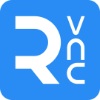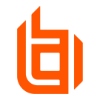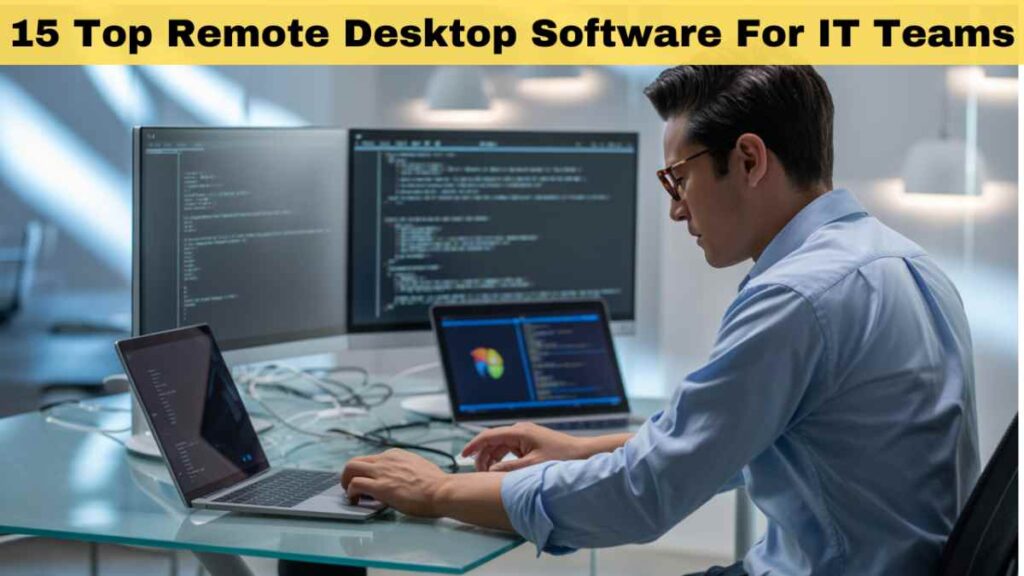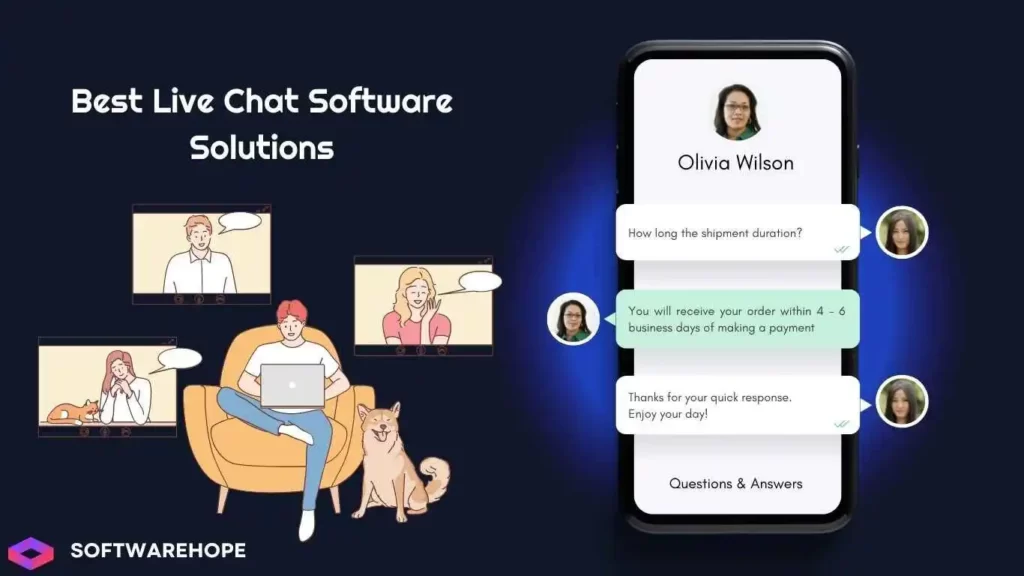When you help people with computer problems from far away, you need a special tool. This tool is called Remote Desktop Software. It lets you see and control someone else’s computer from your own screen, even if they are in another city or country.
Remote Desktop Software is very useful for people who fix computers. They can help without going to the person’s home or office. They just go online and fix the problem fast.
It’s like being a computer superhero. You can help anyone, anytime, from anywhere. Whether you help a few people or many computers, there is a Remote Desktop Software that is right for you.
Table of Contents
Comparison of Top 10 Small Business Loans Websites In USA
| Sr | Image | Name | Rating | Pricing | Compatibility | Features | Website | Details Page |
|---|---|---|---|---|---|---|---|---|
| 1 |
 | TeamViewer | 4.5 | Freemium | Windows,Mac,Linux,iOS,Android,Chrome OS |
| Visit Website | View Details |
| 2 |
| Zoho Assist | 4.2 | Paid | Windows,Mac,Linux,iOS,Android,Web-based |
| Visit Website | View Details |
| 3 |
| Splashtop | 4.3 | Paid | Windows,Mac,iOS,Android,Chromebook |
| Visit Website | View Details |
| 4 |
 | AnyDesk | 4.5 | Freemium | Windows, Mac, Linux, Android, iOS |
| Visit Website | View Details |
| 5 |
 | RemotePC | 4.1 | Paid | Windows,Mac,Linux,iOS,Android,Web-based |
| Visit Website | View Details |
| 6 |
 | Chrome Remote Desktop | 3.8 | Free | Windows,Mac,Linux,iOS,Android,Chrome OS |
| Visit Website | View Details |
| 7 |
 | GoToMyPC | 4.0 | Paid | Windows,Mac,iOS,Android |
| Visit Website | View Details |
| 8 |
| LogMeIn Pro | 4.2 | Paid | Windows,Mac,iOS,Android |
| Visit Website | View Details |
| 9 |
 | ISL Light | 4.0 | Paid | Windows,Mac,Linux,iOS,Android |
| Visit Website | View Details |
| 10 |
| Parallels RAS | 4.3 | Paid | Windows,Mac,Linux,iOS,Android,Web-based |
| Visit Website | View Details |
| 11 |
| Remote Utilities | 4.1 | Paid | Windows,Mac,Linux,iOS,Android |
| Visit Website | View Details |
| 12 |
| ConnectWise Control | 4.4 | Paid | Windows,Mac,Linux,iOS,Android |
| Visit Website | View Details |
| 13 |
 | RealVNC Viewer | 4.0 | Freemium | Windows,Mac,Linux,iOS,Android,Raspberry Pi |
| Visit Website | View Details |
| 14 |
 | BeyondTrust Remote Support BeyondTrust Remote Support | 4.5 | Paid | Windows,Mac,Linux,iOS,Android |
| Visit Website | View Details |
| 15 |
| Atera | 4.2 | Paid | Windows,Mac,iOS,Android,Web-based |
| Visit Website | View Details |
1. TeamViewer: Secure, versatile remote access and support for any device, anywhere.
TeamViewer is probably the most well-known remote desktop software out there, and there’s a good reason why so many people use it every day. It’s kind of like the Swiss Army knife of remote tools – it does just about everything you’d need when jumping onto someone else’s computer. You’ll find it’s super easy to get started, and it works really well whether you’re helping your grandma with her email or handling a whole office’s computers.
What makes TeamViewer stand out is how easy it is to use. You just share an ID and password, and boom – you’re in! It’s packed with cool stuff like sending files, recording the screen, and even letting more than one person connect at the same time. IT folks love it ’cause it’s solid and runs on almost any device you can think of.
Key Features
- Easy one-click connections with ID and password system
- File transfer between connected devices
- Session recording for training or documentation
- Multi-platform support (works everywhere)
- Unattended access for managing computers remotely
- Mobile apps for on-the-go support
- Wake-on-LAN to turn on sleeping computers
Pros & Cons
✅ Pros
- Super user-friendly interface
- Works on all devices and operating systems
- Fast and reliable connections
- Great security features
- Free for personal use
❌ Cons
- Can be expensive for businesses
- Sometimes detects commercial use incorrectly
- Requires internet connection
- Free version has time limits
Device Compatibility:
TeamViewer runs on Windows, Mac, Linux, iPhones, Android phones and even Chromebooks. You can use it on pretty much any device that is connected to the internet. Which is why it is one of the easiest and most handy remote support tools around.
Pricing:
- Starts around $25/month for individual use, $113/month for teams. Generally considered higher priced.
2. Zoho Assist: Comprehensive, secure remote support and unattended access for IT teams
Zoho Assist is kind of like TeamViewer’s friendly cousin. This remote desktop software does a lot of the same stuff but leans more toward helping IT teams give really good customer support. It’s part of the big Zoho family of business tools, so if you’re already using other Zoho apps, this one fits right in like a missing puzzle piece.
What’s cool about Zoho Assist is that it’s made with support teams in mind. You can make support tickets, chat with users while fixing stuff, and even run quick check-ups on their system. It’s sort of like having a handy digital toolbox that not only lets you connect to computers, but also helps you keep track of all the help you’re giving.
Key Features:
- Instant remote support without software installation
- Built-in ticketing system for tracking issues
- Voice and video chat during sessions
- Remote diagnostics and system information
- Bulk deployment for multiple computers
- Session scheduling and automation
- Integration with other Zoho products
Pros & Cons
✅ Pros
- Great for customer support teams
- No installation needed for one-time sessions
- Affordable pricing plans
- Good integration with business tools
- Clean, easy-to-use interface
❌ Cons
- Less feature-rich than some competitors
- Better suited for support than general remote access
- Limited offline capabilities
- Fewer advanced IT management features
Compatibility:
Zoho Assist works on Windows, Mac, Linux, iPhones and Android phones. You can even use it right from a web browser, which makes it a super flexible remote access tool. It is great for businesses that need fast, no fuss connections without any trouble.
Pricing:
- Offers a free plan for one user. Paid plans start around $10-$12/user/month (billed annually).
3. Splashtop: High-performance, secure remote access for businesses and IT support
Splashtop is super fast remote desktop software. It is built to run really smooth, even when you are watching videos or playing games from far away. If you have used slow and laggy remote tools before, Splashtop will feel like going from a bicycle to a race car.
It’s a favorite for creative people and gamers because it shows clear, sharp graphics without getting blurry or jumpy. But it is also great for work, especially if your team needs to use office computers from their laptops at home.
Key Features:
- High-performance streaming with low latency
- 4K resolution support for crystal-clear displays
- Remote printing to local printers
- File transfer with drag-and-drop simplicity
- Multi-monitor support for complex setups
- Mobile device access with touch-friendly controls
- Scheduled connections and automation features
Pros & Cons
✅ Pros
- Extremely fast and responsive connections
- Great for graphics-intensive applications
- Competitive pricing for businesses
- Easy setup and user-friendly interface
- Strong security with encryption
❌ Cons
- Limited free version features
- Fewer collaboration tools than competitors
- Not as many integration options
- Customer support could be better
Device Compatibility:
Splashtop works perfectly on Windows, Mac, iOS, Android, and Chromebook devices. It’s particularly good as unattended remote access software for users who need reliable, high-speed connections to their work computers from anywhere.
Pricing:
- Very competitive, starting around $5/month (billed annually) for remote access, with more advanced support plans available.
4. AnyDesk: Fast, flexible, and secure remote desktop for seamless connectivity
AnyDesk is like the lightweight champ of remote desktop app. It is small, super fast and won’t slow your computer down while it runs. The whole thing is tiny (seriously, it’s smaller than most pics on your phone!), but it still delivers big when it comes to speed and tools.
What really makes AnyDesk shine is how smooth everything feels while you are using it. The mouse moves, typing and screen changes all happen so fast. This remote desktop software is easy to forget you are not actually sitting at the other computer. And it is perfect for IT folks who’ve got to help lots of people all day without getting stuck with laggy, annoying connections.
Key Features:
- Ultra-lightweight software (under 3MB download)
- DeskRT codec for smooth, lag-free performance
- Clipboard synchronization between devices
- File manager for easy file transfers
- Address book for managing connections
- Whiteboard feature for visual collaboration
- Bandwidth optimization for slow connections
Pros & Cons
✅ Pros
- Incredibly small and fast
- Smooth performance even on slow internet
- Free for personal use
- Cross-platform compatibility
- Good security features
❌ Cons
- Interface could be more modern
- Limited collaboration features
- Fewer business management tools
- Customer support response times vary
Device Compatibility:
AnyDesk runs on Windows, Mac, Linux, Android, iOS, FreeBSD and Raspberry Pi. It is one of the most versatile IT remote support software options. It is working well even on older devices and slower internet connections.
Pricing:
- Varies by plan (Solo, Standard, Advanced), with Solo starting around $10/month or ₹1010/month in India. Offers annual subscriptions.
5. RemotePC: Affordable, feature-rich remote access for teams and businesses
RemotePC is kind of like a dependable family car maybe not super flashy, but it always works and doesn’t cost too much. It is great for small businesses and everyday people who need remote access without spending a lot.
The software keeps things simple. This remote desktop software is affordable and has features that make sense for regular use. You will find it easy to set up and run, whether you are connecting to your work computer from home or helping a family member fix a tech issue from far away.
Key Features:
- Always-on remote access to your computers
- File transfer and synchronization
- Remote printing capabilities
- Chat feature for communication during sessions
- Multiple monitor support
- Mobile apps for smartphone access
- Wake-on-LAN for turning on remote computers
Pros & Cons
✅ Pros
- Very affordable pricing
- Simple, straightforward interface
- Good performance and reliability
- 30-day free trial available
- Works well for basic remote access needs
❌ Cons
- Fewer advanced features than competitors
- Limited collaboration tools
- Interface looks a bit dated
- Customer support could be faster
Device Compatibility:
RemotePC works on Windows, Mac, Linux, iOS, Android and through web browsers. It is a solid choice for best remote access tools for business. It need reliable connections without complicated setup procedures.
Pricing:
- Affordable, with plans starting from a few dollars per year for a single computer, scaling up for more devices.
6. Chrome Remote Desktop: Simple, accessible remote desktop for quick, cross-platform use.
Chrome Remote Desktop is Google’s free remote desktop software, and it’s like having a basic but reliable tool that comes in your web browser’s toolbox. Since it’s made by Google, it works seamlessly with Chrome browsers and is super easy to set up – you literally just install an extension and you’re ready to go.
The best thing about Chrome Remote Desktop is that it’s completely free and doesn’t try to sell you anything. It’s perfect for simple remote access needs, like accessing your home computer from work or helping a friend fix something on their laptop. While it doesn’t have all the fancy features of paid software, it does the basic job really well.
Key Features:
- Completely free to use
- Works directly through Chrome browser
- Simple setup with browser extension
- Cross-platform remote access
- PIN-based security system
- Basic file sharing capabilities
- Integration with Google account security
Pros & Cons
✅ Pros
- Totally free with no hidden costs
- Very easy to set up and use
- Works on any device with Chrome
- Backed by Google's security
- No software installation required
❌ Cons
- Limited features compared to paid options
- Requires Chrome browser
- No advanced IT management tools
- Basic interface with few customization options
- Depends on Google services
Device Compatibility:
Chrome Remote Desktop works on pretty much any device that can run Chrome—Windows, Mac, Linux, Chromebooks, even phones and tablets. If you just need simple remote access, it’s one of the easiest options out there.
Pricing:
- Completely Free for both personal and business use.
7. GoToMyPC: Easy and reliable remote access to office PCs from anywhere.
GoToMyPC has been around for a long time in tech years, and it’s like that old friend who’s always ready to help when you need them. This remote desktop software was one of the first remote desktop tools that made logging into another computer super easy. It is still going strong with a focus on being simple and safe.
A lot of people in business use it to reach their office computer from home. It looks clean and professional, and it focuses on doing the main remote access stuff really well instead of trying to do everything.
Key Features:
- Easy drag-and-drop file transfers
- Remote printing to your local printer
- Multi-monitor display support
- Guest invite feature for temporary access
- Mobile apps for tablet and phone access
- Bank-level security encryption
- Automatic software updates
Pros & Cons
✅ Pros
- Very user-friendly interface
- Strong security and encryption
- Reliable performance and uptime
- Good customer support
- Works well for business users
❌ Cons
- More expensive than many competitors
- Limited collaboration features
- Fewer advanced IT management tools
- No free version available
Device Compatibility:
GoToMyPC works on both Windows and Mac, plus it is got mobile apps for iPhone and Android. It is perfect for when you need to access your work computer from anywhere whether you are at home, traveling or just away from your desk. The service gives you reliable access whenever you need it, like a trusted key to your office computer.
Pricing:
- Typically priced per computer, with individual plans around $35-$44/month (billed annually).
8. LogMeIn Pro: Powerful, secure remote access for enhanced productivity and support.
LogMeIn Pro is like the business version of remote access software—it’s packed with pro features that companies and IT teams need, but it costs more because of that. It’s been around for years, and lots of businesses trust it when they need something super reliable.
Where it really stands out is when you have got lots of computers to handle. This remote desktop software gives you fancy tools like centralized control, in-depth reports, and works with other business apps. Think of it like a Swiss Army knife but with extra power tools—yeah, it’s pricier, but it can do way more.
Key Features:
- Central management dashboard for multiple computers
- File synchronization and backup
- Remote printing capabilities
- Multi-monitor support
- Mobile access through smartphone apps
- Advanced security with two-factor authentication
- Integration with business productivity tools
Pros & Cons
✅ Pros
- Excellent for business and enterprise use
- Very reliable and stable connections
- Strong security features
- Good integration capabilities
- Professional customer support
❌ Cons
- Expensive compared to alternatives
- Can be overkill for simple needs
- Interface could be more modern
- No free version available
Device Compatibility:
LogMeIn Pro works on both Windows and Mac, plus there are mobile apps for iPhones and Android phones. It is made for businesses that need serious remote access tools like IT teams who want pro level features.
Pricing:
- Plans range from $35-$155/month (billed annually), depending on the number of computers accessed.
9. ISL Light: Reliable, secure remote desktop for efficient IT support and unattended access.
ISL Light is like that nice neighbor who’s always there to help. This remote desktop software is easy to use, works great, and makes remote support a breeze for both the helper and the person needing help. IT teams love it ‘cause it lets them fix issues fast without making customers deal with a bunch of complicated steps.
The coolest part? The person getting help doesn’t even have to install anything. They just open a small file, and bam—you’re connected. That makes it perfect for quick fixes where you don’t wanna leave stuff behind on their computer.
Key Features:
- No installation required for one-time sessions
- Session recording for training and documentation
- File transfer with resume capability
- Multi-platform remote support
- Reboot and reconnect functionality
- Chat and voice communication during sessions
- Customizable client branding
Pros & Cons
✅ Pros
- Great for customer support scenarios
- No software installation needed
- Good security and encryption
- Reasonable pricing for businesses
- Clean, professional interface
❌ Cons
- Less known than major competitors
- Fewer advanced features than enterprise solutions
- Limited free version
- Customer support response times vary
Device Compatibility:
ISL Light works on pretty much everything—Windows, Mac, Linux, iPhones and Android. It is one of the best remote access tools out there, especially for businesses that need fast, no-fuss support connections with customers.
Pricing:
- Offers “Pay Per Use” (charged per minute) or monthly/annual cloud licenses starting around $35/month.
10. Parallels RAS: Centralized remote desktop and application delivery for enterprises
Parallels RAS (Remote Application Server) is the heavy-duty option for remote access—perfect for big companies with hundreds or thousands of users. It’s like swapping a bike for a bus: way more capacity for complex needs.
The best part? This remote desktop software lets you share just the apps people need, not whole desktops. Great for businesses that want tight security but still need employees to work from anywhere.
Key Features:
- Virtual application and desktop publishing
- Load balancing for multiple servers
- Advanced security with multi-factor authentication
- Centralized management console
- HTML5 web access without client installation
- Mobile device management integration
- Detailed analytics and reporting
Pros & Cons
✅ Pros
- Excellent for large enterprise deployments
- Strong security and compliance features
- Scalable to thousands of users
- Good integration with existing IT infrastructure
- Professional support and services
❌ Cons
- Expensive and complex for small businesses
- Requires significant IT expertise to set up
- Overkill for simple remote access needs
- Steep learning curve
Device Compatibility:
Parallels RAS supports Windows, Mac, Linux, iOS, Android, and web browsers. It’s designed as enterprise-grade remote monitoring and management (RMM) tools for large organizations with complex remote access requirements.
Pricing:
- Priced per concurrent user, often with a minimum user requirement (e.g., 15 users). Around $120/year per user.
11. Remote Utilities: Highly affordable remote desktop management for Windows
Remote Utilities is like a customizable remote desktop toolkit—it lets you connect and control computers in many ways, and you can set it up just how you want. IT pros love it because it’s flexible and doesn’t force you into a single way of working.
This remote desktop software software has different versions for different needs. You can get a simple viewer for quick connections or a full admin console to manage lots of computers. It’s like choosing only the tools you need instead of carrying around extras you won’t use.
Key Features:
- Multiple connection modes (full control, view only, file transfer)
- Address book for organizing connections
- Scheduled and scripted connections
- Remote registry and services management
- Wake-on-LAN and remote shutdown
- Chat and voice communication
- Portable versions that don’t require installation
Pros & Cons
✅ Pros
- Very flexible and customizable
- Good value for money
- Doesn't require internet registration
- Multiple deployment options
- Strong feature set for IT professionals
❌ Cons
- Interface could be more user-friendly
- Learning curve for advanced features
- Less polished than major competitors
- Limited mobile app functionality
Device Compatibility:
Remote Utilities works best on Windows but also has viewer apps for Mac, Linux, iOS, and Android. It’s a top choice for IT support teams that mainly use Windows.
Pricing:
- One-time fees, starting from $99 for “Starter” (10 endpoints) to higher tiers for more features and endpoints.
12. ConnectWise Control: Robust remote support and access with advanced session control
ConnectWise Control is like a pro’s remote-access tool perfect for IT teams who help lots of clients. If you run an IT business, this software saves time and helps you earn more.
This remote desktop software fits right in with other tools and has useful features like billing, time tracking and support tickets. Think of it as a full business system that also lets you remote into computers and does it really well.
Key Features:
- Ticketing and customer management integration
- Time tracking and billing capabilities
- Unattended access with deployment tools
- Session recording and reporting
- Mobile access for technicians on the go
- Scripting and automation features
- Integration with PSA and RMM platforms
Pros & Cons
✅ Pros
- Excellent for managed service providers
- Strong business management features
- Good integration with other ConnectWise products
- Scalable for growing businesses
- Professional support and training
❌ Cons
- Expensive for small teams
- Complex setup and configuration
- Focused primarily on service providers
- Learning curve for new users
Device Compatibility:
ConnectWise Control works on Windows, Mac, Linux, iOS and Android. It is a powerful remote access tool for IT teams, offering professional grade support and management features.
Pricing:
- Agent-based pricing, usually per concurrent session or per unattended device. Plans start around $28/month (billed annually) for a single license with limited unattended agents.
13. RealVNC Viewer (VNC Connect): sy-to-use, secure remote connectivity for corporate environments
RealVNC Viewer is like the original version of remote desktop software. VNC (Virtual Network Computing) was one of the first ways to control a computer over a network, and RealVNC is the company that built it. It is like having the original Coca-Cola recipe while others make their own versions. RealVNC does not focus on fancy designs or extra features. Instead, it is all about strong security, reliable performance and working on many systems.
Key Features:
- Industry-standard VNC protocol
- Cloud and direct connectivity options
- Enterprise-grade security and encryption
- Cross-platform compatibility
- Team collaboration features
- Session recording capabilities
- API integration for custom applications
Pros & Cons
✅ Pros
- Very secure and reliable
- Works on virtually any platform
- Good for security-conscious organizations
- Flexible deployment options
- Strong reputation and track record
❌ Cons
- Interface feels dated compared to modern alternatives
- Can be more complex to set up
- Limited customer support on free versions
- Performance not as smooth as newer solutions
Device Compatibility:
RealVNC works on almost any device Windows, Mac, Linux, Raspberry Pi, iOS and Android.
Pricing:
- Multiple pricing editions, starting around $8.25/month.
14. BeyondTrust Remote Support: Secure, robust remote support for all your systems.
BeyondTrust Remote Support? Think of it as the Fort Knox of remote access. This isn’t just another “connect and hope for the best” tool—it’s built for organizations that can’t afford security risks. Governments, Fortune 500 companies, and hospitals rely on it because it’s packed with top-tier encryption and compliance certifications.
Sure, this remote desktop software is not the simplest tool (nothing this secure ever is), but when protecting sensitive data, you’d rather have a vault than a screen door.
Key Features:
- Privileged access management integration
- Session recording with tamper-proof storage
- Multi-factor authentication and approval workflows
- Compliance reporting for regulatory requirements
- Jump server and gateway capabilities
- Mobile device support with MDM integration
- Advanced auditing and forensics features
Pros & Cons
✅ Pros
- Excellent security and compliance features
- Great for highly regulated industries
- Strong enterprise integration capabilities
- Professional support and services
- Comprehensive auditing and reporting
❌ Cons
- Very expensive for most organizations
- Complex setup and administration
- Overkill for simple remote access needs
- Steep learning curve for users
Device Compatibility:
BeyondTrust Remote Support works on Windows, Mac, Linux, iOS and Android.
Pricing:
- Enterprise-grade solution, pricing is typically higher and often requires custom quotes, ranging from thousands to tens of thousands of dollars annually.
15. Atera: All-in-one RMM and remote desktop for streamlined IT management
Atera is like a Swiss Army knife for IT teams. It gives you remote desktop access along with tools for monitoring, ticketing and billing all in one place. Instead of paying for separate tools, you get everything in one package for one price.
What makes Atera stand out is its pricing. You pay per technician not per device. That means your costs stay the same even if you manage more computers as your business grows.
Key Features:
- Integrated ticketing and PSA functionality
- Remote monitoring and management (RMM)
- Patch management and automation
- Network discovery and inventory
- Mobile apps for technicians
- Customer billing and invoicing
- Real-time alerts and notifications
Pros & Cons
✅ Pros
- All-in-one solution for IT teams
- Per-technician pricing is cost-effective
- Good for managed service providers
- Easy to set up and use
- Regular feature updates and improvements
❌ Cons
- Remote access features aren't as advanced as specialized tools
- Relatively new compared to established competitors
- Limited customization options
- Some advanced features still in development
Device Compatibility:
Atera remote desktop software works on Windows, Mac, iOS and Android. You can access it through any web browser. It is an all-in-one remote monitoring and management (RMM) tool made for IT teams.
Pricing:
- Per-technician pricing for MSPs and IT departments. MSP plans start around $129/month per technician (billed annually).
Vijay Datt is a website developer, software expert, and SEO specialist. He writes about the latest software, graphic design tools, and SEO strategies. With expertise in web development and image creation, he helps businesses grow online. His articles provide valuable insights to enhance digital success.



